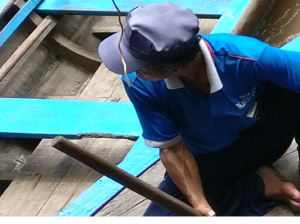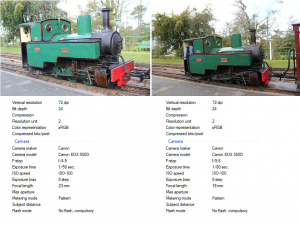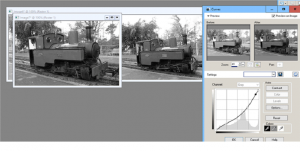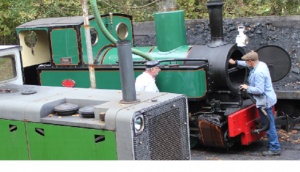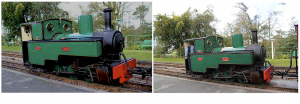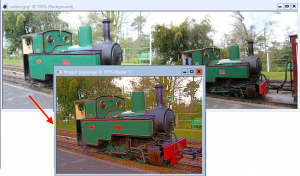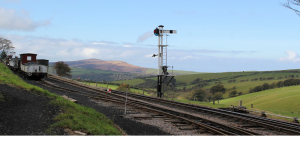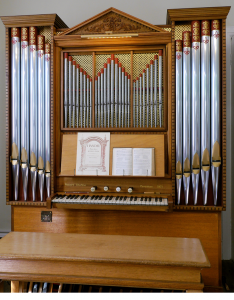Tony Grant
Earlier this year I did something I swore I’d never do, I spent over £200 on a mobile phone! (This joins the ranks of other things I said I’d never do, like buying a CD player, a microwave, a dishwasher, a digital camera, you get the drift). Anyhow, having managed to make a phone call, and after a lot of help from the younger generation, I also found out how to answer a call.
Spurred on by this success, I decided to experiment whilst on holiday in Cornwall a couple of weeks ago (September 2017), and had a go at
(a) taking a photograph with it, and whooo-hooo, living dangerously,
(b) filming a video of waves.
On getting home there followed the tedious process of trying to get the phone to talk to the computer, but eventually found a programme called ‘airdroid’ which did the trick. Thus I was able to view amazingly good quality photos on the computer, and then mind-blowing quality videos. I mean the picture quality is better than the £20k+ Ike I bought in the 1990s. OK, there are some motion artefacts, and the sound’s (in)distinctly iffy, but my jaw’s still on the floor. So it looks like I’m in danger of joining the ranks of those youngsters who tote a mobile around all over the place, leaving my expensive cameras at home (yeah, alongside the microwave and dishwasher). There’s a rumour that it can also tell me where I am, and show me the way to go home.
What’s it going to replace next? Who needs to believe in replicants? Who needs the human race? It’s not computers taking control any longer, it’s the mobile. Wait, wait, there’s a text message:
‘IT’S YOUR BEDTIME’
oops …
Dave Plowman
My Phone Explorer is very good too. It allows easy editing of the contact list using your proper PC keyboard – and to send texts via the phone too, as well as accessing the photos, etc. via cable WiFi or Bluetooth.
My phone is a Samsung, and the PC program they supply for that is, well, rubbish.
As you say, the quality of the cameras is amazing, for us older types who remember early digital.
Geoff Fletcher
I have to confess that my iPhone has indeed replaced my expensive (and bulky!) Canon DSLR kit which I used to lug around. As an exercise, I really got to grips with the phone’s camera system and I was astounded at what could be achieved. It has rekindled my interest in photography and I use it as a movie camera or still camera all the time now.
The quality is mind boggling, and I can even edit and tweak à la simple Photoshop on the phone to some extent. I added one app to obtain slow shutter effects, but the rest was built in, including zoom capability, differential and spot focussing, and spot exposure for example.
When I was a lad, just starting out on photography as a serious hobby, I carried my first simple roll film camera with me everywhere and shot as many frames as I could afford – just for the magic of it and learning and experimenting as I went along. I now find myself back there again, only with now no limit to the number of frames I can shoot. As a result, my creativity and enthusiasm has been revived, and it affords me a great deal of satisfaction and pleasure, particularly when "pushing the envelope".
John Nottage
I’m not sure I do believe it. My old Samsung S3 Mini is irreplaceable in terms of keeping track of my schedule and storing images and information, but as a camera? Certainly, on a sunny day with a nice view to take, or as an emergency record shot, fine, but take a look at the tiny lens, exposed to dust and dirt: it’s never going to compete with a proper camera with a good fast lens when it comes to wildlife or night shots. I always use my Panasonic FZ1000 for my wildlife photos. When I set off for Kenya next month, I’ll have my phone of course, but photos will be taken on the Panasonic.
Could you have taken pictures like these on an iPhone?:
(Click on the picture below to see larger version:
use your Browser’s BACK button to return to this page)
See the originals at:
https://www.dropbox.com/sh/bfsibkq9hf88hct/AADU1F_5fogqADhKAF_YIxMCa?dl=0
If so, I’d love to see them. That would convert me!
Dave Plowman
I don’t know the S3 Mini, but you’d need to check out a modern one as the camera side has improved immensely over the years.
Of course it’s not going to be as good as a decent (expensive) modern camera. But as a snapshot device, they can be excellent. And always with you, if you always carry a phone. Unlike an SLR, etc.
Bernie Newnham
Horse for courses, I suppose. I really like my Nikon D7000 but it is big and lumpy. Turns out incredible pictures, but I only use it these days when it actually is the right thing to use. So – pictures in low light on a narrow lens at Tech Ops lunches, eBay pack shots and other stuff that is likely to need a bit of post production, passport photos and similar. For other things my OnePlus3 phone is entirely good enough.
This is full size from the phone, just faintly soft –
(Click on the pictures below to see larger versions:
use your Browser’s BACK button to return to this page)
These were taken from a tiny lens which mostly lives in my pocket unprotected – but a whole lot easier to tote around in a small wobbly boat on the Mekong, and definitely good enough for any non-photo oriented holiday. For wildlife, a waste of space.
And of course, the phone isn’t really a phone, it’s a computer with added phone. So –
"Where am I"
"When’s my next train? "
“Oh look the ISS will be overhead in 8h40m" (it will)
"I need an Uber in Saigon" (I did)
"I’ll just edit that bit of video"
"I’m out of reading, never mind, Project Gutenberg will have something"
etc etc etc.
There was a long period when people used to say "Well, we don’t have the internet" as if it were an advantage – now it’s "I don’t need a Smartphone" (my wife – who then relies on mine).
Ian Norman
I recently purchased a full frame Sony A7 body only and a Canon FD mount adapter. Dug out my very old, but very good set of FD lens.
Everything is manual, but the focus assist works well as does the exposure tools and the pictures are truly stunning. Not suitable for snapshot situations but when you have time, definitely worth the effort.
Tony Grant
Having got my super-expensive gizmo, I was discussing its abilities with the younger family, comparing notes, and saying I couldn’t be bothered copying all my phone numbers, addresses, lists of things to do, etc. on to it, when I was told I didn’t have to do that.
You just take a photo of your document, say driving licence, car insurance cover note, passport, etc. and then you have a photo record of the doc on your phone, and you can zoom in to see any small print if necessary!
Well, I wish I’d thought of that, it just goes to show that these youngsters can teach us a thing or two after all.
Alasdair Lawrance
I think that’s very interesting. In olden times if we thought of copying a document it meant taking it to the machine the size of a sideboard that whirred and clanked and, eventually, spewed out a copy, however grudgingly.
Now the young folk, with fresh eyes, just take a pic.
The downside is if your phone gets nicked, or you lose it.
Nick Rodger
It’s no problem if you lose your phone, apart from having to get a new one, because you just reload everything from the cloud.
Alasdair Lawrance
In the meantime some identity theft might well have happened, and being old fashioned, I can’t see the cloud as being very secure?
Graeme Wall
You have set a passcode on your phone, haven’t you?
Dave Plowman
A picture of a contact list doesn’t allow you to add or remove contacts.
All of us on here obviously use a computer. Get a decent program that allows you to transfer data between it and your phone: one that also allows you to store things like texts and pics on your phone in your computer too.
For an old fart like me a proper keyboard is much easier to use than a small touch screen.
Brian Curtis
One quirky use for my mobile phone camera I’m often instructed to do by my "domestic management” is that, when we are out a one or another of our fine local restaurants here on the Isle of Wight, I take a picture of the "specials board" so that she may peruse it at leisure at our table.
John Howell
It is also invaluable for taking a picture of the wine label, If the wine sunk in, the name may not have !
And on to DSLRs…
Alec Bray
The two photographs below were taken within some seconds of each other. The one on the right is the "correct" colour – the one on the left is the only photograph (out of 116) which has the incorrect colour for the locomotive.
(Click on the picture below to see larger version:
use your Browser’s BACK button to return to this page)
I have looked at them in black and white, and can get a reasonable match on the grey scale by adjusting the gamma, but I am still bemused as to why this single image out of more than 100 has the incorrect colour rendition. Any ideas?
(Click on the picture below to see larger version:
use your Browser’s BACK button to return to this page)
I have fiddled around with the colour channels, colour mixer and so on, all to no avail! (BTW in PaintShop Pro).
By the way, the photos are of the Lynton and Barnstaple railway at Woody Bay – the last great narrow gauge adventure – and it is in England!
Ian Hillson
I would think that Left Hand tight shot has less sky so when the camera took an average of scene content, it overexposed that one – either that or the spot reading (if used) on Right Hand one was on sky or reflection off top of tender. Just guessing really – we need someone of the calibre of John Henshall to tell us. ☺
In the good-old-days of film, one would always tend to underexpose it for more saturation. Now we have software to do that!
Graeme Wall
I’d go for average meter reading rather than spot.
Keith Wicks
The picture on the left was taken with a wider aperture and a slower shutter speed, giving an exposure greater by a factor of about 3.2 times. Hence the brighter image, especially noticeable in the shadow areas, and the lighter colours. Assuming that the brightness of the scene had not changed, I don’t know why the exposure would have changed. Perhaps you may be able to guess why this is?
Pat Heigham
At a rough guess, I would say that it’s an exposure difference, affecting the colour saturation.
From the info given, it seems that the Left image is overexposed. Have you got other pics at that same f stop and shutter speed?
Alec Bray
I have been through most of the photos – and have found one with the same f stop and shutter speed as the strangely coloured left hand picture – and yes, it is showing the same (strange) colour rendition (when flicking through the photos I had not really noticed this before, I noticed the colour issue really only with the two consecutive photos.):
f4.0 1/50th second.
(Click on the picture below to see larger version:
use your Browser’s BACK button to return to this page)
Checking the timestamps, the two consecutive pictures are actually some minutes apart – all that I recollect doing was zooming out 23 – 18 mm, Exposure was set to "automatic no flash" on the Canon – sort of snapshot mode.
Changes in the colour saturation, colour balance etc on some of the photos I can understand, due to the "cloudy bright" weather and the various positions of the locomotive and so on: it was just these two consecutive images that had me guessing. In the vast majority of the photos taken this day, the locomotive colour is rendered more or less "correctly".
Ah well – just have to blame the clouds …
Pat Heigham
I use Paint Shop Pro 8, and while not claiming to be totally expert, I believe that one can adjust the exposure and saturation of a photo, fairly simply?
Mind you, if you are wishing to make hard copy prints, a printer can introduce other unwanted artefacts!
(P.S. I’m using a lovely double sided glossy paper – ICE 220gsm – it’s splendid on my elderly HP printer, which I’m only keeping going until I’ve run out of cartridges before I commission a new Epson 635. I also use an Epson 2100 A3 machine as well as a Canon A3 – I used to produce posters for a church and a professional sound guild!)
Albert Barber
I have a Canon and depending on the light and content, the white balance will alter if it’s set on auto white balance.
On these two pictures the content is different and therefoer the overall adjustment is different.
Otherwise – don’t know.
Pat Heigham
Tallking of white balance – here’s a link to a story involving Betacam 400.
See: http://tech-ops.co.uk/next/thats-why-we-had-cameramen/
Bob Auger
I’m a great fan of Corel Paint Shop Pro (PSP) and have been using it for years (now on version 9 but 8 is very similar.) Also have the latest Photoshop but PSP gets used more…
White balance can be set by going to Adjust/White Balance on the menu bar. Then click on white/grey/black objects in the picture for auto. You can tweak levels for a particular effect. If you only want to change one small area, first use the Magic Wand to select the area you want (maybe lit by daylight while everything else is room lighting) then adjust as before.
I tend to prefer the Smart Photo Fix option, then adjust black/white/gray as needed.
Hope this helps.
Keith Wicks
I’m sure that Ian H is right — the increased exposure in the first picture is caused by less sky area being included.
If the loco colour is the main concern, then a simple graphics programme could be used to reduce brightness. I used Graphic Converter on a Mac to reduce brightness in the first shot by 60% (I didn’t bother fiddling with contrast, saturation or anything else).
(Click on the picture below to see larger version:
use your Browser’s BACK button to return to this page)
The loco green is now an approximate match, but some people might prefer the original picture as little of the mechanics can now be seen — as in the original "correct" exposure on the right. I’m sure that, with more elaborate software and much more time, someone could make a much better job of this.
Ian Hillson
Methinks Keith that you get the "most helpful" award in all this. And not just for agreeing with me!
Chris Woolf
What is interesting about all this is that the electronic camera has managed to retain all the information, allowing one to re-process the picture later and get the colour correct, the detail in the shadow regions , and something in the clouds too.
Back in the chemical days, this was mostly lost at a very early stage if the exposure/developing wasn’t optimum.
Nick Ware
Presumably, that’s because film has a non-linear gamma curve and the digital sensor is to all intents and purposes linear. And also, of course, if one is able to work with an uncompressed RAW or BMP file, that’s even better, as each time you save and re-save a .jpg it gets further compressed.
Chris Woolf
Yes – CCDs are remarkably linear, and get a law correction added during processing. They also have 1 to 3 stops greater dynamic range over film nowadays, so you can rescue shadow stuff superbly. CCDs become slightly non-linear near saturation, but that is normally dealt with by knee correction over the top few % or so of their range. Film tends to crush at both ends.
Tony Grant
It’s many years since I knew lots about individual cameras (calls from off-stage, ‘Who says you ever did?’), but at one stage ‘prosumer’ cams had an auto setting for colour which adjusted overall colour within a picture depending upon some onboard ‘factory setting’ for ‘average’ colour, thus not directly related to white balance or colour temperature setting. This became very apparent on one shot on one of the training courses I ran for a cable company using these cameras in which the frame was suddenly dominated by a red double decker, completely shifting the colours of other elements within the frame, and frustrating any attempt at an unnoticeable edit during that portion of the take.
Looking at the two pictures of the loco, this agrees with the suggestion that the amount of blue sky in the frame is affecting the relative colour values, plus affecting the exposure.
As an aside, I used to ask attendees at the beginning of a course if any of them had bought a colour camera. Usually they all claimed they had. So I told them to take it to the store they bought it from and get their money back, as there was no such thing. The camera ‘knows’ nothing about colour, it’s black and white, and simply processes three monochrome images in accordance with predetermined formulae (colour matrix being a good term to throw into the mix). Part of the idea was to ensure that they didn’t rely on any auto settings during the course (since I’d had that trouble from chancers all too frequently in the past).
Alec Bray
Thanks for all your suggestions re the colours on the locomotives!
Fault one of mine was, of course, to use the auto setting on the camera – I was using it as a point-and-shoot camera, which is not really the way to use a decent Canon: there are all sorts of nice manual things to do – and which I DO actually use (although somewhat occasionally!).
I use PaintshopPro – it is reporting version 12.1 (as a Corel product) – and I have Adobe Photoshop and Canon’s Digital Photo Professional amongst other graphics programs. I certainly prefer PSP over Photoshop.
I have had another quick hack at the picture using your various suggestions: what do you think?
For me, at the Lynton and Barnstaple railway, the loco is not always the centre of attention! It’s the whole setting… What more could you want: Exmoor and a railway!
(Click on the picture below to see larger version:
use your Browser’s BACK button to return to this page)
And yes, the "main line" (by the signal) is at a gradient of 1 in 50: the sidings are on the level. The ruling gradient of the whole line is actually 1 in 50: the summit is at Woody Bay.
Nick Ware
If I might contribute to this (I left Art school to join the BBC with a Rolleiflex and an ARPS).
I think you’re now over colour saturated, but it’s preferable to the over exposed original.
I take my photography pretty seriously, and am up to version 19 (X9) with Paintshop Pro. With every upgrade there have been significant improvements and additions, not the least of which being that since PSP8 it’s moved from film to digital optimisation of everything, including current printer types.
Another thing to bear in mind should you choose manual exposure mode is that the actual aperture of almost all stills zooms varies with focal length by at least 1 f stop, which means if you zoom and don’t change the exposure there will be variations. Your metadata shows that to be only part of the issue here though.
Having gone through several generations of Nikons and Hasselblads and various lenses for both, I’m now the happiest I’ve ever been with a Lumix G6 and an unbelievably sharp 14-140mm Lumix zoom. The body’s software automatically corrects for chromatic abberation and barrel/pincushion distortion. And the Micro-four-thirds lens technology that produces corner-to-corner pin sharpness is a total game-changer – only found on Lumix, Olympus and Leica. Example attached. Truly fabulous.
(Click on the picture below to see larger version:
use your Browser’s BACK button to return to this page)
Graeme Wall
Nice organ, as the actress said to the bishop!
See also Secrets of the Super Elements



